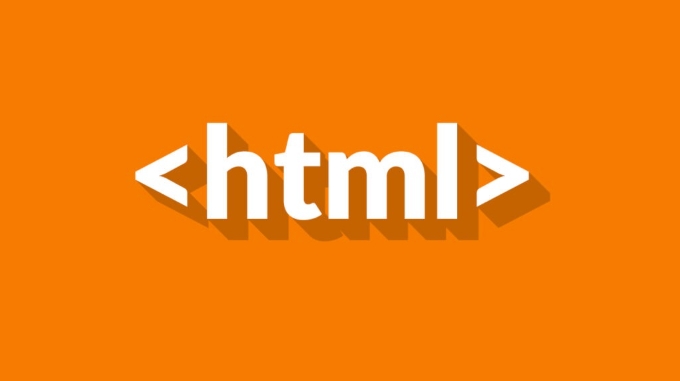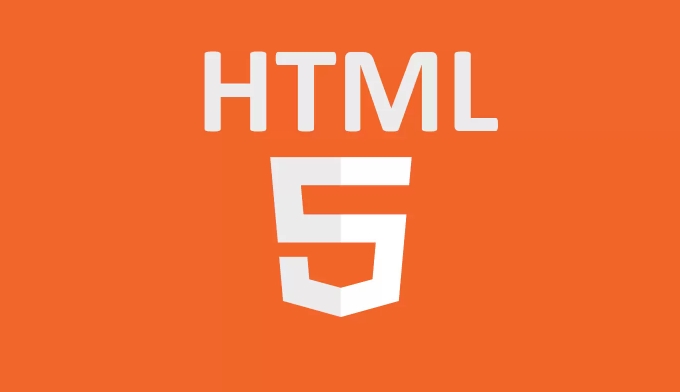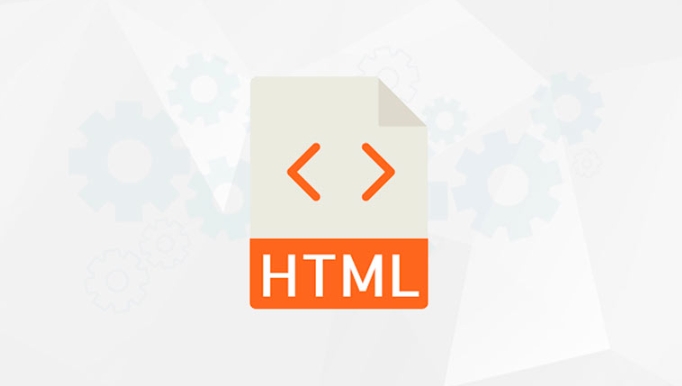link rel="dns-prefetch" is a lightweight front-end optimization method that is suitable for scenarios where pages refer to multiple third-party resources or CDNs. When a webpage uses external resources such as Google Fonts, statistics scripts, alliance JS, or multiple CDN domain names, you can reduce the DNS query time by resolving the domain name in advance. The correct way to use it is to add: <link rel="dns-prefetch" href="//example.com"> in the HTML, but it should avoid abuse and give priority to domain names that must be loaded later. The difference between it and preconnect is that the latter also establishes TCP and TLS connections. The two can be used in combination, in order first dns-prefetch and then preconnect. Other points of attention include no need to add to the main site, more obvious mobile effects, and limited support for testing tools. Rational use can bring stable performance improvements.

To put it directly into the key point: link rel="dns-prefetch" is a lightweight but easily overlooked front-end optimization method, especially suitable for scenarios where the page refers to multiple third-party resources or CDNs.

When should I use dns-prefetch
If your webpage refers to external resources, such as Google Fonts, statistics scripts, ad alliance JS, or uses multiple CDN domains to distribute static files, you can consider adding this tag.
DNS resolution is the first step in a browser to load a page, and the resolution is usually initiated before requesting a resource. Through dns-prefetch , you can tell the browser in advance: "I will use these domain names later, please help me resolve them first." This way, when you really need to load, you can save the time of a DNS query.

Common applicable scenarios:
- The page references multiple resources with different domain names
- Public CDNs are used (such as fonts.gstatic.com, cdn.jsdelivr.net)
- There are many third-party plug-ins, such as comment system, sharing button, and burying scripts
How to use it correctly
The usage is very simple, just add a line of code similar to the following in the area of HTML:

<link rel="dns-prefetch" href="//example.com">
Pay attention to some details:
- The protocol part can be omitted, and it is more common to start with
// - Don't abuse it, too much will increase the burden on the browser
- Priority is given to setting pre-parses for domain names that "it will only be loaded later but must be used"
For example, if you use Google Fonts, you can add a line to the head:
<link rel="dns-prefetch" href="//fonts.gstatic.com">
In this way, the browser will parse the domain name in advance when it is idle, speeding up the font loading speed.
Differences from preconnect
Many people will confuse dns-prefetch and preconnect . In fact, although they are all optimization methods, they do different things:
-
dns-prefetchdoes only one thing: parse the IP corresponding to the domain name in advance -
preconnectgoes a step further, not only does DNS resolution, but also establishes TCP connections and even TLS handshakes.
So if you are sure that a domain name will be used soon, it will be better to directly use preconnect . But if it is just "maybe used", it is safer to use dns-prefetch .
The two can be used together, generally the order is dns-prefetch first and then preconnect :
<link rel="dns-prefetch" href="//example.com">
Some points that are easy to ignore
- Don't add to the current main site : the browser has automatically done DNS resolution of the main site, and adding it will be unnecessary
- Mobile terminals are more effective : In mobile network environment, DNS resolution delay is much higher than that of desktop, and early processing can improve the experience
- Test tool support is limited : Some performance analysis tools do not specifically indicate whether dns-prefetch is effective, and can only observe the DNS search for reduction through the timeline.
Basically that's it. It doesn't seem complicated, but in actual projects, especially on multi-resource loading pages, reasonable use can indeed bring a small but stable optimization effect.
The above is the detailed content of HTML `link rel='dns-prefetch'` Optimization. For more information, please follow other related articles on the PHP Chinese website!

Hot AI Tools

Undress AI Tool
Undress images for free

Undresser.AI Undress
AI-powered app for creating realistic nude photos

AI Clothes Remover
Online AI tool for removing clothes from photos.

Clothoff.io
AI clothes remover

Video Face Swap
Swap faces in any video effortlessly with our completely free AI face swap tool!

Hot Article

Hot Tools

Notepad++7.3.1
Easy-to-use and free code editor

SublimeText3 Chinese version
Chinese version, very easy to use

Zend Studio 13.0.1
Powerful PHP integrated development environment

Dreamweaver CS6
Visual web development tools

SublimeText3 Mac version
God-level code editing software (SublimeText3)
 Implementing Clickable Buttons Using the HTML button Element
Jul 07, 2025 am 02:31 AM
Implementing Clickable Buttons Using the HTML button Element
Jul 07, 2025 am 02:31 AM
To use HTML button elements to achieve clickable buttons, you must first master its basic usage and common precautions. 1. Create buttons with tags and define behaviors through type attributes (such as button, submit, reset), which is submitted by default; 2. Add interactive functions through JavaScript, which can be written inline or bind event listeners through ID to improve maintenance; 3. Use CSS to customize styles, including background color, border, rounded corners and hover/active status effects to enhance user experience; 4. Pay attention to common problems: make sure that the disabled attribute is not enabled, JS events are correctly bound, layout occlusion, and use the help of developer tools to troubleshoot exceptions. Master this
 Configuring Document Metadata Within the HTML head Element
Jul 09, 2025 am 02:30 AM
Configuring Document Metadata Within the HTML head Element
Jul 09, 2025 am 02:30 AM
Metadata in HTMLhead is crucial for SEO, social sharing, and browser behavior. 1. Set the page title and description, use and keep it concise and unique; 2. Add OpenGraph and Twitter card information to optimize social sharing effects, pay attention to the image size and use debugging tools to test; 3. Define the character set and viewport settings to ensure multi-language support is adapted to the mobile terminal; 4. Optional tags such as author copyright, robots control and canonical prevent duplicate content should also be configured reasonably.
 Best HTML tutorial for beginners in 2025
Jul 08, 2025 am 12:25 AM
Best HTML tutorial for beginners in 2025
Jul 08, 2025 am 12:25 AM
TolearnHTMLin2025,chooseatutorialthatbalanceshands-onpracticewithmodernstandardsandintegratesCSSandJavaScriptbasics.1.Prioritizehands-onlearningwithstep-by-stepprojectslikebuildingapersonalprofileorbloglayout.2.EnsureitcoversmodernHTMLelementssuchas,
 HTML for email templates tutorial
Jul 10, 2025 pm 02:01 PM
HTML for email templates tutorial
Jul 10, 2025 pm 02:01 PM
How to make HTML mail templates with good compatibility? First, you need to build a structure with tables to avoid using div flex or grid layout; secondly, all styles must be inlined and cannot rely on external CSS; then the picture should be added with alt description and use a public URL, and the buttons should be simulated with a table or td with background color; finally, you must test and adjust the details on multiple clients.
 How to associate captions with images or media using the html figure and figcaption elements?
Jul 07, 2025 am 02:30 AM
How to associate captions with images or media using the html figure and figcaption elements?
Jul 07, 2025 am 02:30 AM
Using HTML sums allows for intuitive and semantic clarity to add caption text to images or media. 1. Used to wrap independent media content, such as pictures, videos or code blocks; 2. It is placed as its explanatory text, and can be located above or below the media; 3. They not only improve the clarity of the page structure, but also enhance accessibility and SEO effect; 4. When using it, you should pay attention to avoid abuse, and apply to content that needs to be emphasized and accompanied by description, rather than ordinary decorative pictures; 5. The alt attribute that cannot be ignored, which is different from figcaption; 6. The figcaption is flexible and can be placed at the top or bottom of the figure as needed. Using these two tags correctly helps to build semantic and easy to understand web content.
 How to handle forms submission in HTML without a server?
Jul 09, 2025 am 01:14 AM
How to handle forms submission in HTML without a server?
Jul 09, 2025 am 01:14 AM
When there is no backend server, HTML form submission can still be processed through front-end technology or third-party services. Specific methods include: 1. Use JavaScript to intercept form submissions to achieve input verification and user feedback, but the data will not be persisted; 2. Use third-party serverless form services such as Formspree to collect data and provide email notification and redirection functions; 3. Use localStorage to store temporary client data, which is suitable for saving user preferences or managing single-page application status, but is not suitable for long-term storage of sensitive information.
 What are the most commonly used global attributes in html?
Jul 10, 2025 am 10:58 AM
What are the most commonly used global attributes in html?
Jul 10, 2025 am 10:58 AM
class, id, style, data-, and title are the most commonly used global attributes in HTML. class is used to specify one or more class names to facilitate style setting and JavaScript operations; id provides unique identifiers for elements, suitable for anchor jumps and JavaScript control; style allows for inline styles to be added, suitable for temporary debugging but not recommended for large-scale use; data-properties are used to store custom data, which is convenient for front-end and back-end interaction; title is used to add mouseover prompts, but its style and behavior are limited by the browser. Reasonable selection of these attributes can improve development efficiency and user experience.
 Implementing Native Lazy Loading for Images in HTML
Jul 12, 2025 am 12:48 AM
Implementing Native Lazy Loading for Images in HTML
Jul 12, 2025 am 12:48 AM
Native lazy loading is a built-in browser function that enables lazy loading of pictures by adding loading="lazy" attribute to the tag. 1. It does not require JavaScript or third-party libraries, and is used directly in HTML; 2. It is suitable for pictures that are not displayed on the first screen below the page, picture gallery scrolling add-ons and large picture resources; 3. It is not suitable for pictures with first screen or display:none; 4. When using it, a suitable placeholder should be set to avoid layout jitter; 5. It should optimize responsive image loading in combination with srcset and sizes attributes; 6. Compatibility issues need to be considered. Some old browsers do not support it. They can be used through feature detection and combined with JavaScript solutions.






